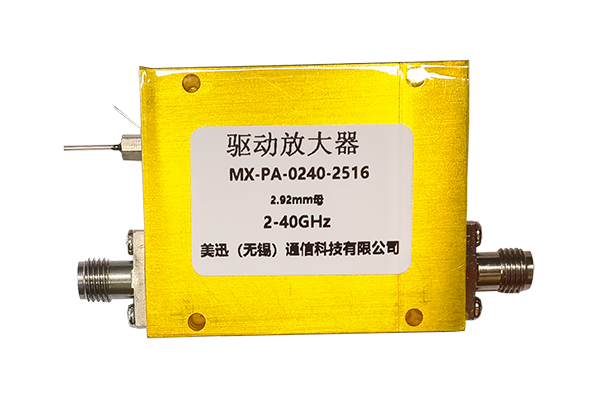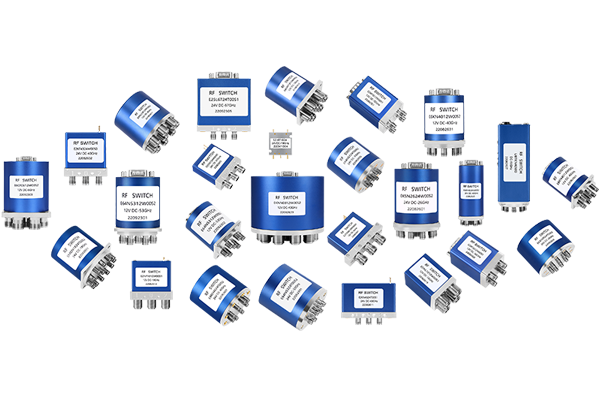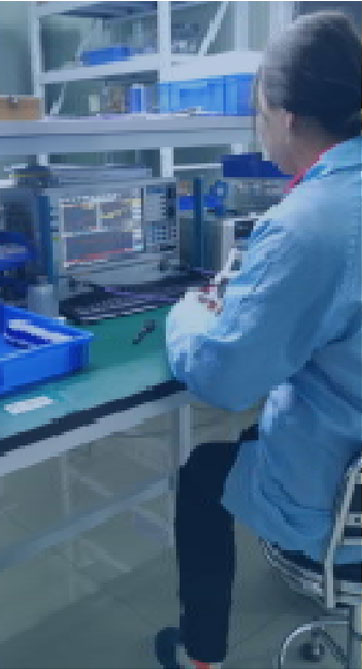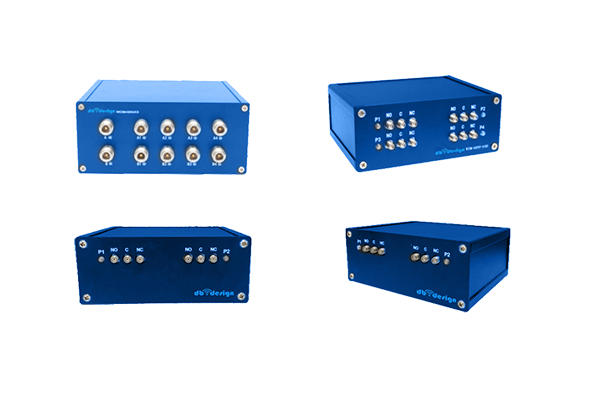
Pin diodes now serve as significant elements in high-bandwidth applications owing to their fundamental material and electrical qualities Their fast toggling behavior plus small capacitance and reduced insertion loss renders them apt for use in switch modulator and attenuator circuits. The underlying principle of PIN diode switching involves controlling charge flow through the junction by biasing the device. That voltage alters the depletion region width in the p n junction thereby changing conductivity. Modifying the applied bias permits PIN diodes to function at high frequencies with minimal signal distortion
For applications demanding exact timing and control PIN diodes are typically incorporated into complex circuitry They can function inside RF filters to permit or attenuate targeted frequency bands. Moreover their high-power handling capability renders them suitable for use in amplification division and signal generation stages. Miniaturization and improved efficiency of PIN diodes have extended their usefulness across wireless systems and radar platforms
Performance Considerations for Coaxial Switch Engineering
The design of coaxial switches is intricate and needs detailed assessment of numerous variables Switch performance is influenced by factors like the switch type operating frequency and insertion loss characteristics. Superior coaxial switch design seeks minimal insertion loss alongside strong isolation between ports
Performance assessment centers on return loss insertion loss and port isolation metrics. Metrics are assessed using simulation tools theoretical modeling and laboratory measurements. Rigorous performance analysis is necessary to secure dependable coaxial switch operation
- Analytical methods simulation packages and experimental testing are standard approaches to coaxial switch analysis
- Environmental temperature impedance mismatches and production tolerances can significantly influence switch characteristics
- Emerging developments and novel techniques in switch design concentrate on boosting performance while minimizing footprint and energy use
Low Noise Amplifier LNA Design Optimization
Improving LNA performance efficiency and gain is key to maintaining high signal fidelity across applications This requires careful selection of transistors bias conditions and circuit topology. Good LNA design practices focus on lowering noise and achieving high amplification with minimal distortion. Simulation and modeling techniques are essential for analyzing the noise consequences of design options. Targeting a small Noise Figure quantifies how well the amplifier keeps the signal intact against intrinsic noise
- Choosing active devices with low noise profiles is a key requirement
- Correctly applied bias conditions that are optimal and suitable are vital for low noise
- Circuit topology choices are decisive for the resulting noise performance
Approaches such as matching networks noise suppression and feedback loops help improve LNA behavior
Wireless Path Selection via PIN Switches

PIN diode switch networks offer flexible and efficient means to route RF energy in many systems These devices switch rapidly enabling active dynamic routing of RF paths. The low insertion loss and high isolation of PIN diodes help maintain signal integrity during switching. Common uses encompass antenna selection duplexers and phased array implementations
The switching behavior is governed by voltage driven modulation of the diode’s resistance. In the open or deactivated condition the device offers large resistance that prevents signal passage. Applying a forward control voltage lowers the diode’s resistance enabling signal transmission
- Furthermore additionally moreover pin diode switches deliver fast switching speeds low power use and compact footprints
Different architectures and configurations of PIN diode switch networks enable complex routing capabilities. Arranging multiple switches in networked matrices enables flexible routing and dynamic configuration
Coaxial Microwave Switch Performance Evaluation

Rigorous evaluation and testing of coaxial microwave switches are key to confirming dependable operation in electronics. A range of factors like insertion reflection transmission loss isolation switching rate and bandwidth affect switch performance. A full evaluation process measures these characteristics under various operating environmental and test conditions
- Moreover additionally furthermore the evaluation ought to include reliability robustness durability and environmental tolerance considerations
- Finally the result of robust evaluation gives key valuable essential data for choosing designing and optimizing switches to meet specific requirements
Review of Techniques to Reduce Noise in Low Noise Amplifiers
LNAs serve essential roles in wireless RF systems by amplifying weak signals and curbing noise. The review supplies a broad examination analysis and overview of methods to diminish noise in LNAs. We examine explore and discuss primary noise origins such as thermal shot and flicker noise. We also review noise matching feedback implementations and biasing tactics aimed at reducing noise. It highlights recent progress including advanced semiconductor materials and novel circuit topologies that cut noise figure. By summarizing key noise suppression principles and practices the review assists engineers and researchers developing high performance RF systems
Use Cases for PIN Diodes in High Speed Switching

PIN diodes possess remarkable unique and exceptional traits that fit them well for high speed switching systems Small capacitance together with low resistance enables rapid switching to satisfy precise timing needs. Their proportional voltage response enables controlled amplitude modulation and reliable switching behavior. Their adaptability flexibility and versatility qualifies them as suitable applicable and appropriate for broad high speed uses Typical domains include optical communication systems microwave circuitry and signal processing hardware and devices
IC Based Coaxial Switch and Circuit Switching Technologies
Integrated coaxial switch IC designs improve signal routing processing and handling across electronic systems circuits and devices. These specialty ICs are engineered to control manage and direct signal flow through coaxial cables offering high frequency performance and low latency propagation insertion times. Miniaturization inherent in IC technology yields compact efficient reliable and robust designs suited for dense interfacing integration and connectivity requirements
- By meticulously carefully and rigorously applying these methods developers can produce LNAs with superior noise performance enabling sensitive reliable electronics Through careful meticulous and rigorous implementation of these approaches engineers can achieve LNAs with exceptional noise performance supporting sensitive reliable systems By carefully meticulously and rigorously applying these approaches designers can realize LNAs with outstanding noise performance enabling low-noise amplifier sensitive reliable electronic systems By meticulously carefully and rigorously adopting these practices designers can deliver LNAs with excellent noise performance supporting reliable sensitive systems
- Applications of IC coaxial switch technology span telecommunications data communications and wireless networks
- These technologies find application in aerospace defense and industrial automation fields
- IC coaxial switching finds roles in consumer electronics audio visual equipment and test and measurement tools
Designing LNAs for Millimeter Wave Frequencies

At mmWave frequencies LNAs must contend with greater signal attenuation and intensified influence from noise sources. Parasitic elements such as capacitance and inductance dominate performance at mmWave so layout and component selection are critical. Controlling input match and achieving high power gain are critical essential and important requirements in mmWave LNA design. Choice of active devices such as HEMTs GaAs MESFETs or InP HBTs is crucial to reach low noise figures at mmWave. Additionally furthermore moreover careful design implementation and optimization of matching networks is vital for efficient power transfer and impedance matching. Attention to package parasitics is crucial as they have potential to harm mmWave LNA performance. Choosing low-loss interconnects and sound ground plane designs is essential necessary and important to minimize reflections and maintain high bandwidth
Modeling and Characterization of PIN Diodes for RF Use
PIN diodes act as fundamental components elements and parts for many RF switching uses. Detailed accurate and precise characterization of these devices is essential to design develop and optimize reliable high performance circuits. The work involves analyzing evaluating and examining electrical characteristics like voltage current resistance impedance and conductance. Also measured are frequency response bandwidth tuning abilities and switching speed latency or response time
Additionally moreover furthermore the development of precise models simulations and representations for PIN diodes is critical essential and vital for predicting behavior in complex RF contexts. Numerous available modeling techniques include lumped element distributed element and SPICE approaches. Model selection is guided by specific application requirements and the desired required expected accuracy
Sophisticated Techniques to Achieve Minimal LNA Noise
LNA design is a critical undertaking that demands precise attention to topology and parts selection to achieve low noise. Recent emerging and novel semiconductor progress has enabled innovative groundbreaking sophisticated design approaches that reduce noise markedly.
Among the techniques are utilizing implementing and employing wideband matching networks integrating low noise high intrinsic gain transistors and refining biasing schemes strategies and approaches. Moreover additionally furthermore sophisticated packaging and thermal control solutions significantly help reduce noise contributions from outside sources. Through careful meticulous and rigorous implementation of these approaches engineers can achieve LNAs with exceptional noise performance supporting sensitive reliable systems
